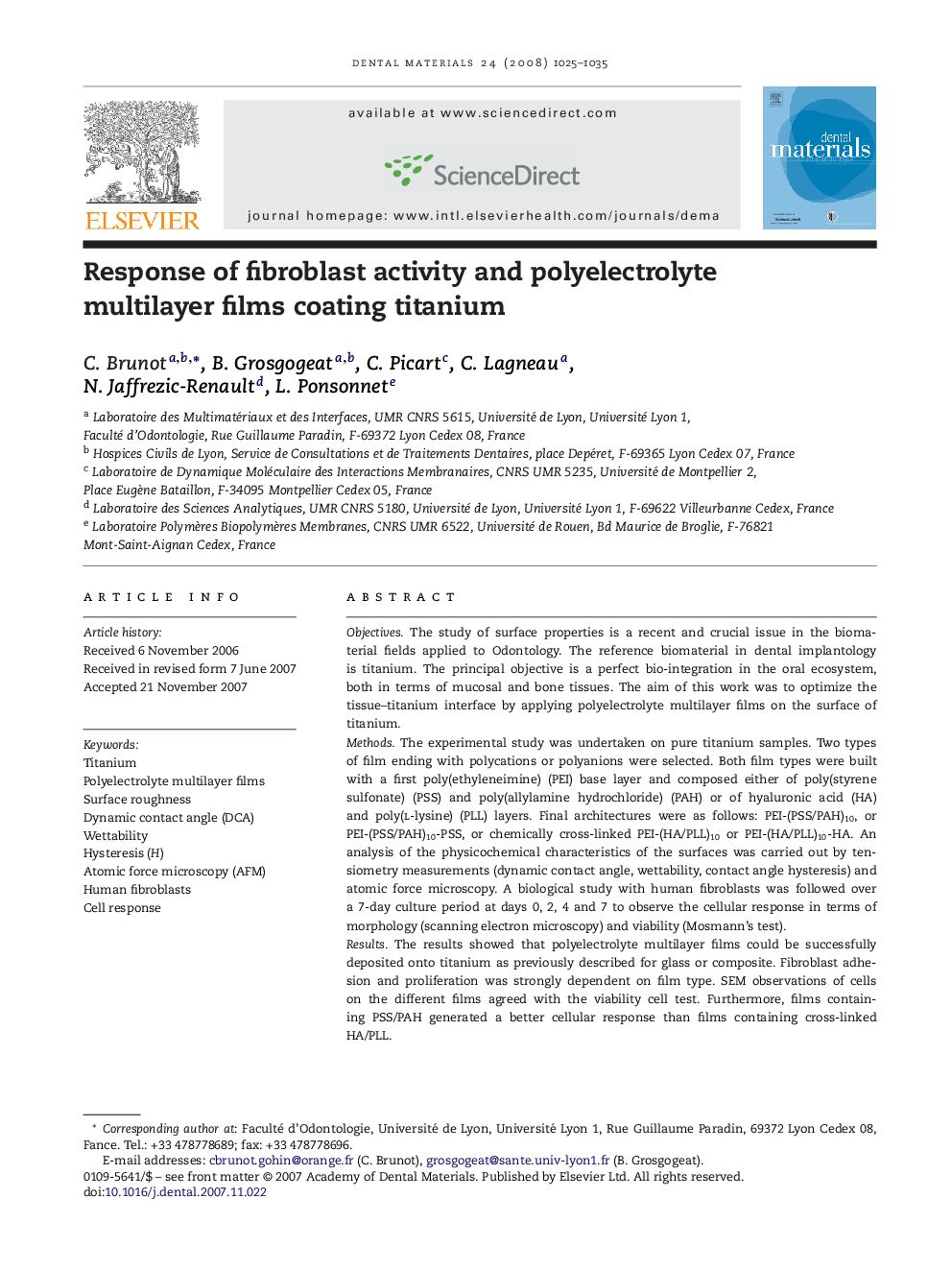| کد مقاله | کد نشریه | سال انتشار | مقاله انگلیسی | نسخه تمام متن |
|---|---|---|---|---|
| 1422753 | 986461 | 2008 | 11 صفحه PDF | دانلود رایگان |

ObjectivesThe study of surface properties is a recent and crucial issue in the biomaterial fields applied to Odontology. The reference biomaterial in dental implantology is titanium. The principal objective is a perfect bio-integration in the oral ecosystem, both in terms of mucosal and bone tissues. The aim of this work was to optimize the tissue–titanium interface by applying polyelectrolyte multilayer films on the surface of titanium.MethodsThe experimental study was undertaken on pure titanium samples. Two types of film ending with polycations or polyanions were selected. Both film types were built with a first poly(ethyleneimine) (PEI) base layer and composed either of poly(styrene sulfonate) (PSS) and poly(allylamine hydrochloride) (PAH) or of hyaluronic acid (HA) and poly(l-lysine) (PLL) layers. Final architectures were as follows: PEI-(PSS/PAH)10, or PEI-(PSS/PAH)10-PSS, or chemically cross-linked PEI-(HA/PLL)10 or PEI-(HA/PLL)10-HA. An analysis of the physicochemical characteristics of the surfaces was carried out by tensiometry measurements (dynamic contact angle, wettability, contact angle hysteresis) and atomic force microscopy. A biological study with human fibroblasts was followed over a 7-day culture period at days 0, 2, 4 and 7 to observe the cellular response in terms of morphology (scanning electron microscopy) and viability (Mosmann's test).ResultsThe results showed that polyelectrolyte multilayer films could be successfully deposited onto titanium as previously described for glass or composite. Fibroblast adhesion and proliferation was strongly dependent on film type. SEM observations of cells on the different films agreed with the viability cell test. Furthermore, films containing PSS/PAH generated a better cellular response than films containing cross-linked HA/PLL.ConclusionPSS/PAH polyelectrolyte films coating titanium could represent a new approach for oral bio-integration with great potential for clinical application in the fields of dental implantology. More particularly, the specific biofunctionalization of PSS/PAH films coating titanium could be envisioned by introducing layers of molecules that encourage the bio-integration process between the films.
Journal: Dental Materials - Volume 24, Issue 8, August 2008, Pages 1025–1035